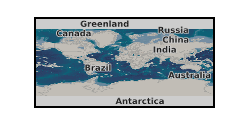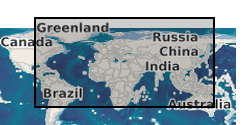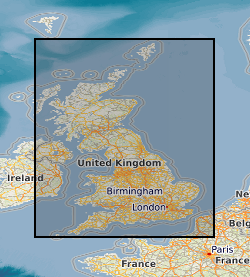Magnesium
Type of resources
Topics
Keywords
Contact for the resource
Provided by
Years
Formats
Representation types
Update frequencies
-

Mg/Ca in multiple species of planktonic foraminifera from five time slices since the Middle Miocene to present (target ages 15, 12.5, 10, 7.5, 4.5, 2.5 and 0 Ma). These samples are from a range of globally and latitudinally distributed DSDP (Deep Sea Drilling Program), ODP (Ocean Drilling Program), IODP (International Ocean Discovery Program) open ocean sites. From low to high latitudes these are: Site U1338, U1489 (Eastern and Western Equatorial Pacific), Sites 871, 872, and Site U1490, (Western Tropical Pacific), Site 242 (Mozambique Channel, Indian Ocean), U1482 (Australian Continental Margin), Site 516 (Western Atlantic Ocean), Site 1138 (Kerguelen Plateau, Southern Ocean). The Mg/Ca ratios were measured using Inductively coupled mass spectrometry (ICP-MS) at Cardiff University between December 2018 and June 2019. The data were collected to explore Mg/Ca values for modern and extinct species at different intervals of time (which were different climatically) and at different geographical locations. This data was collected by E.Mawbey as part of a project funded by NERC (Q10 project) to investigate changes in foraminiferal depth habitat in response to different climate conditions.
-

The dataset includes oxygen and carbon stable isotopes measured on multispecies planktonic foraminifera from 15 million years ago to the present, as well as trace elements ratio and abundance counts. For the code availability and instructions to run the cGENIE version and experiments see Boscolo-Galazzo, Crichton et al. (2021).
-

We used existing coretop samples from several sites from the Atlantic, Arctic, Pacific, and Indian Oceans (Fig. 1 and Table S1) to test the relationship between Mg/Ca ratios and D47 values in modern foraminifera. In the North Atlantic the cores were the same as those used previously by Elderfield and Ganssen (2000) (Tables S1 and S2). Coretops with the potential to yield large (>5 mg) mono-specific samples of foraminifera were selected from the >300 lm size fraction of the sediment except for Neogloboquadrina pachyderma (sinistral) where the >150 lm size fraction was chosen to obtain sufficient material. After cleaning the samples consisted of _3 mg of foraminiferal calcite and included 8 different species of surface- and deepdwelling planktonic foraminifera: Globigerina bulloides, Globigerinoides sacculifer, Globorotalia hirsuta, Globorotalia inflata, Globorotalia menardii, Neogloboquadrina dutertrei, Neogloboquadrina pachyderma (s), and Orbulina universa. The Godwin Laboratory clumped isotope calibration (i.e., the regression between D47 and temperature) was established using natural cave carbonates that precipitated subaqueously at known temperatures, ranging from 3 to 47ºC (Table 1, Fig. 2). These carbonates grew under conditions that minimize CO2-degassing and evaporation and hence kinetic fractionation effects are negligible owing to an unlimited DIC pool in the water (Kele et al., 2015). All samples consist of calcite, except NAICA-1 which is aragonite.
-

This dataset represents the first publication of complete national maps from the Geochemical Baseline Survey of the Environment (G-BASE) and TellusNI projects, whose aim was to conduct a national geochemical survey of the United Kingdom in order to improve understanding of our geology and environment and provide quantitative evidence against which to gauge future environmental change. This dataset consists of a series of interpolated raster (ASCII grid) maps displaying the concentrations of a suite of chemical elements (and oxides) in the stream sediments of the United Kingdom. The chemical elements are as follows: Arsenic, Barium, Calcium (CaO), Chromium, Cobalt, Copper, Iron (Fe2O3), Lanthanum, Lead, Magnesium (MgO), Manganese (MnO), Nickel, Potassium (K2O), Rubidium, Uranium, Vanadium, Zinc and Zirconium.
 NERC Data Catalogue Service
NERC Data Catalogue Service